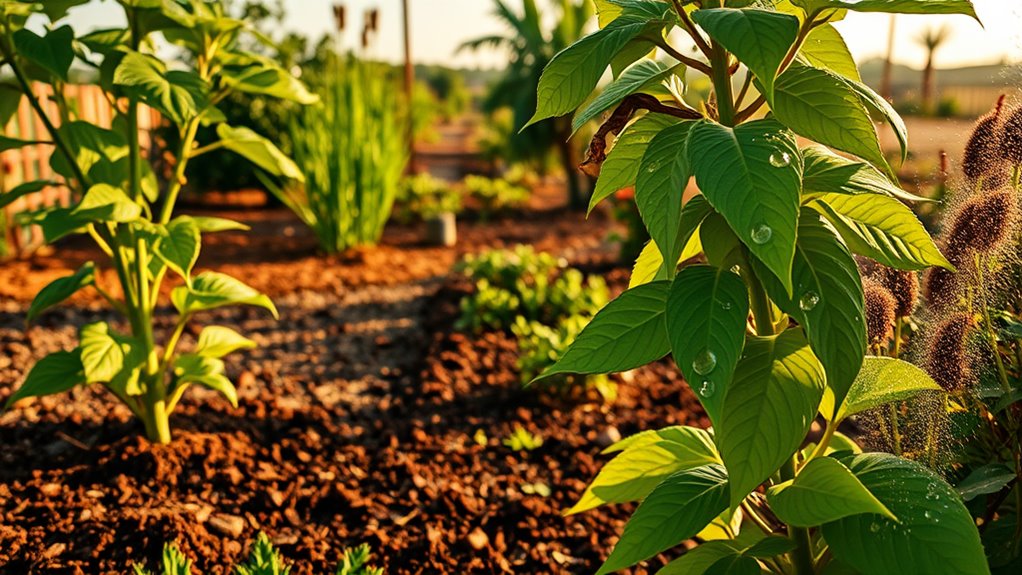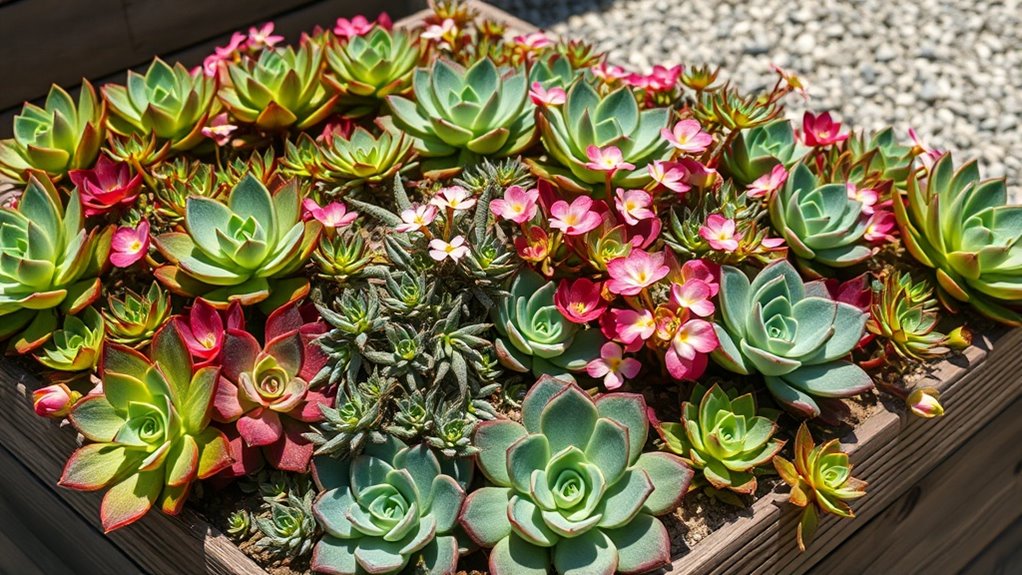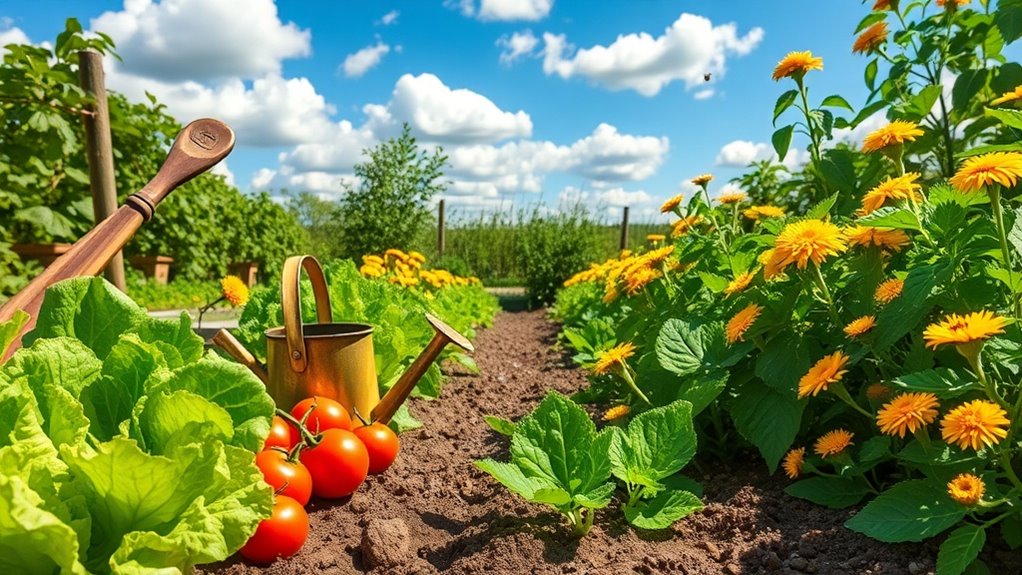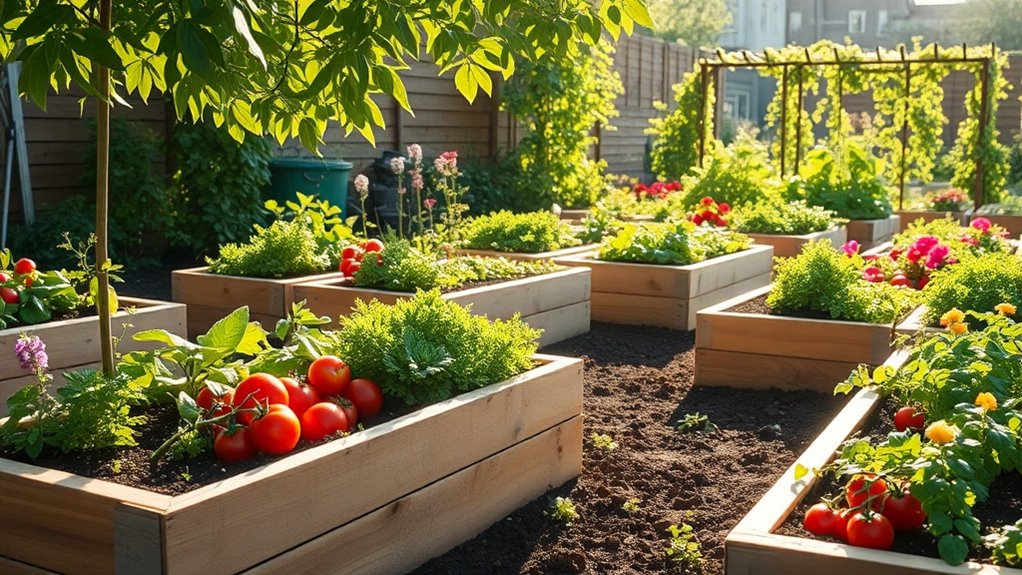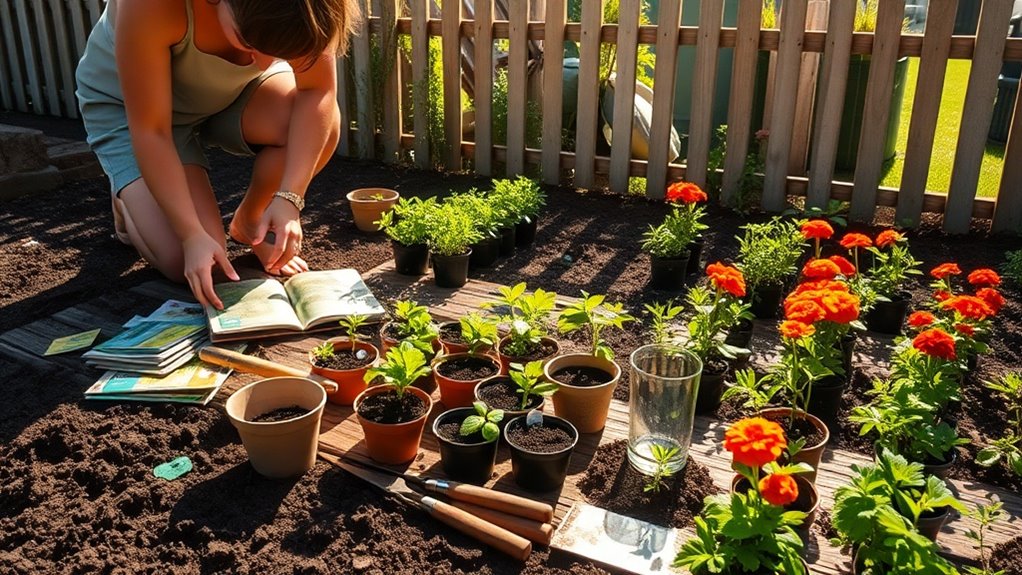3 Watering Tips That Saved My Garden During a Heatwave
During a heatwave, you can protect your garden with these three essential tips. First, water deeply and infrequently to encourage stronger roots and reduce evaporation, soaking soil 6-8 inches down. Second, time your sessions for early morning to minimize disease and align with plants’ natural cycles. Third, add mulch to retain moisture, moderate temperatures, and suppress weeds. Try these strategies, and you’ll uncover additional ways to boost your garden’s endurance.
Key Takeaways
- Water deeply and infrequently to encourage strong root growth and minimize evaporation.
- Water early in the morning to reduce water loss and lower disease risks.
- Apply a 2-4 inch layer of mulch to retain soil moisture and suppress weeds.
- Monitor soil moisture at root level to ensure plants receive adequate hydration.
- Use drip irrigation or soaker hoses for efficient, targeted watering during heatwaves.
Deep and Infrequent Watering
While frequent shallow watering might tempt you, deep and infrequent methods promote healthier roots and water efficiency in your garden.
These heat-proof watering tips encourage roots to grow deeper, accessing stable moisture and nutrients below the surface, which builds plant resilience against intense heat.
You’re soaking the soil thoroughly—aim for 6-8 inches deep—to minimize evaporation and foster drought tolerance.
Scientifically, this reduces surface runoff and fungal diseases by maintaining even soil moisture. Moreover, avoiding common mistakes in watering techniques helps prevent issues like overwatering and ensures long-term plant vitality.
Practically, use a soaker hose or drip irrigation; check soil moisture at root level before watering to avoid waste, ensuring your plants thrive in heatwaves.
By applying these tips, you can ensure your plants remain hydrated and healthy even in extreme conditions.
Optimal Timing for Watering
The optimal time to water your garden is early morning, before the sun intensifies, as this minimizes evaporation and lets plants absorb moisture efficiently.
You’ll reduce disease risks, like fungal growth on wet leaves, by avoiding midday heat that stresses plants. Early watering aligns with their natural transpiration cycles, promoting deeper root growth for resilience.
If morning doesn’t work, evening is a backup, but ensure foliage dries before night to ward off pests.
Monitor weather patterns; during heatwaves, consistency keeps soil hydrated without waste, boosting your garden’s survival. By adopting smart watering techniques, you can save water and improve garden productivity.
Utilizing these strategies also aids in maximizing plant growth while minimizing overall water usage.
Mulching to Retain Moisture
Mulching conserves soil moisture in your garden by creating a protective barrier that cuts evaporation. It reduces watering needs, moderates soil temperature, and suppresses weeds, making it essential during heatwaves to protect plant roots from drying out. For instance, experimenting with various mulch types can lead to remarkable improvements in garden growth and overall plant vitality.
To implement mulching effectively:
-
Select the right material: Choose organic options like bark or compost; they break down to enrich soil nutrients and improve structure.
-
Apply correctly: Spread a 2-4 inch layer around plants, ensuring it’s even and keeps away from stems to prevent rot and promote aeration.
-
Maintain regularly: Check mulch thickness periodically and replenish as it decomposes, monitoring soil moisture to optimize water retention and plant health.
Moreover, mulching enhances garden vitality by improving soil health through better nutrient enrichment and microbial activity.

